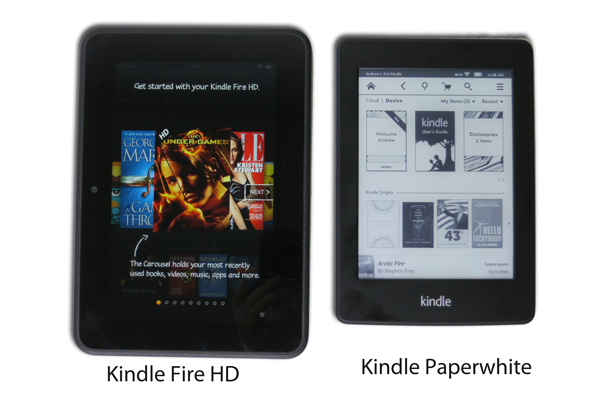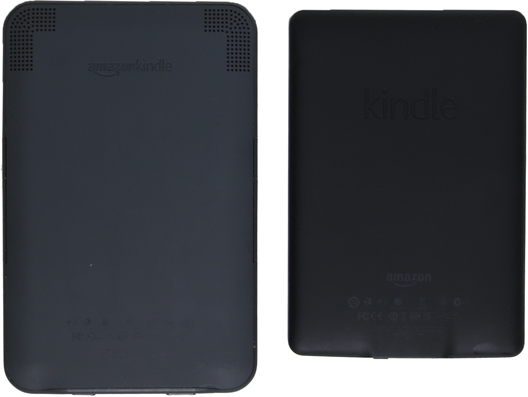Amazon Kindle Paperwhite Review: The Best E-Book Reader?
Although Amazon's Kindle Fire HD gets all of the glory, the company's hardware business is rooted in e-books. The Kindle Paperwhite's front-light promises something different. But with the recent proliferation of cheap tablets, is it still worth buying?
Amazon's Newest E-Book Reader: Now, With Light
The clunky first-generation Kindle employed E Ink's electronic paper technology, which is a far cry from today’s hi-res Kindle Fire HD. Interestingly, though, despite the more modern device's seemingly indelible display advantage, the e-book reader and tablet markets haven't really converged.
Amazon continues to develop e-book readers because digital book sales remain a cornerstone of the company’s business. And that goes a long way to explain the concurrent release of Amazon's Kindle Tough and fourth-generation Kindle alongside the original Fire tablet. The newest dedicated e-book reader from Amazon is called the Kindle Paperwhite, and its name does a pretty good job of describing its role.
The Paperwhite's most significant evolutionary feature is lighting. You don’t need a reading lamp over your shoulder to see this device clearly, as you might have in the past with previous e-book readers. Amazon considers this its flagship e-book reader, and the unlit models are available at even lower price points.
| Specifications | Kindle Paperwhite | Kindle | Kindle Keyboard 3G |
|---|---|---|---|
| Display Type | 6" Paperwhite | 6" E Ink Pearl | 6" E Ink Pearl |
| Dimensions | 6.7" x 4.6" x 0.36" | 6.5" x 4.5" x 0.34" | 7.5" x 4.8" x 0.34" |
| Weight | 7.8 oz (3G), 7.5 oz (Wi-Fi) | 5.98 oz. | 8.7 oz |
| User Accessible Space | 1.35 GiB | 1.35 GiB | 3.05 GiB |
| Battery | Li-ion Polymer 1470 mAh (3.7 V) | Li-ion Polymer 890 mAh (3.7 V) | Li-ion Polymer 1750 mAh (3.7 V) |
| Battery Life | 8 weeks(wireless off) | 4 weeks(wireless off) | 8 weeks(wireless off) |
| Text To Speech/MP3 Playback | No | No | Yes |
| Special Offer Price | 3G: $179Wi-Fi: $119 | $69 | $139 |
| Regular Pricing | 3G: $199Wi-Fi: $139 | $89 | $159 |
The generic Kindle moniker now refers to the fourth-generation model we reviewed in Hands-On: Amazon’s Fourth-Gen Kindle Refresh; the only difference is that it’s now also available in black. Yes, today, the “Kindle” is Amazon's barebones budget model, retailing for just $69. It lacks touch sensitivity, so you need to use navigation buttons to hit keys on a virtual keyboard. If that’s too much of a pain for you, Amazon still sells the Kindle Keyboard 3G, though it'll run you an additional $60 bucks.
In comparison, the Wi-Fi-equipped Kindle Paperwhite costs $139, or $119 with special offers (basically, Amazon’s ad system). If you’re constantly on the move, with less access to Wi-Fi, it might be worth paying $60 more for the 3G-equipped model, which lets you make purchases on the road without 802.11 connectivity.
Physically, the Kindle Paperwhite is slightly larger than the base Kindle e-book reader. The major difference between them is weight, though the flagship mode is only an ounce-and-a-half heavier. Compared to the Kindle Keyboard 3G, there’s no question that Amazon's Paperwhite is both smaller and lighter.
This product effectively replaces the Kindle Touch, which explains why it feels so familiar in our hands. As a touch-based e-book reader, the Paperwhite is devoid of physical I/O, aside from a power button along its bottom edge. Amazon continues to use a rubberized plastic back cover, which is texturally comfortable to grip, and unlike the aluminum and glass iPad.
Get Tom's Hardware's best news and in-depth reviews, straight to your inbox.
Interestingly, Amazon claims that the Paperwhite boasts an astounding eight weeks of battery life. That's double what you can expect from the base-model Kindle, but seemingly plausible, given the Paperwhite's larger 1,470 mAh power source. With that said, the battery's scaling suggests that the e-book reader's light isn't a significant drain. Although it's impractical to run our usual battery life tests on the Paperwhite, a week of constant use gives us every reason to believe that you can read for a few hours a day and not have to bother reaching for a charger.
Current page: Amazon's Newest E-Book Reader: Now, With Light
Next Page Frontlighting, Examined-
Stimpack I've been contemplating whether I should buy the Kindle Fire or the Paperwhite for a couple of weeks now. While this summation of the Paperwhite and its features helped shed some light (heheh.) on its selling points, I still feel no closer to a decision.Reply
Nevertheless, it was an entertaining read! In fact, it's made me register an account here. I can't wait to read more articles like this. Fun stuff! -
kartu slomo4shoI am still waiting for a Kindle with SD or mSD expandability.It's called "Sony Reader T2". It runs Android. And it's rooted.Reply
And you are not bound to Amazon's store with it, even non rooted you can burrow books from electronic libraries and read common formats like EPUB. -
Mark Matthews dirtyferretive read several books on my kindle fire HD, often for hours at a time, and never had an issue with eye strain or battery life. In fact i prefer reading on the kindle HD then a regular book.Reply
The one advantage of e-ink readers like the traditional kindle, is you can read it in daylight. I have an iPad and spend a lot of time chilling on the back deck during the summer, and I have to go through a lot of seating arrangements to minimize the glare so that I can see the iPad. Ordering a new Kindle just for this purpose. -
ubercake I like my Paperwhite. It's really easy on the eyes and does not have all the distractions of a tablet. When I want to read, I use this. It's great under sunlight, but does in fact have a sort of mild glare under artificial overhead lighting conditions. Nothing bad, though. You can just tilt it a little one way or another to elimnate the glare. What is especially great is when it's dark and you're a passenger on a car ride. You can continue to read. The lighting is great and doesn't fatigue your eyes like an LED or LCD screen.Reply
Cloud sync is great too for those times when I don't have my Kindle with me. I can pick up my phone with my Kindle app and start reading right where I left off on my Kindle and vice versa.
Also, the battery lasts significantly longer (we're talking months of daily reading) if you just shut off the wireless connection when you're not downloading any books or sync-ing to the cloud. If you leave the wireless connection on full-time, you need to recharge after about 4 weeks. -
tridon I really fell in love with the graphs over Display Performance that showed the differences between the Kindles. Please use this the next time you review a Kindle as well. It would be valuable extra information when deciding whether or not to buy a new version a year or two :) It will be very interesting to see if the Paperwhite has improved the clearness in a year.Reply
Great article! *thumbs up the article* -
tridon StimpackI've been contemplating whether I should buy the Kindle Fire or the Paperwhite for a couple of weeks now. While this summation of the Paperwhite and its features helped shed some light (heheh.) on its selling points, I still feel no closer to a decision. Nevertheless, it was an entertaining read! In fact, it's made me register an account here. I can't wait to read more articles like this. Fun stuff!Reply
If you plan to read a lot where there is natural light (in the sun or shadow outside or near windows, etc) I would really recommend the Paperwhite. Just my personal preference. My eyes are really having a hard time reading on a tablet under such conditions. If you mostly read where you can control the lightning condition the Paperwhite would still be easier on the eyes, but there is no longer a real problem reading on the tablet =) -
I've being using 3 models of kindle. The back light on the latest one is great but the touch screen... ARG, my god, a pain in the but. Get me simple buttons, I miss my buttons SO MUCH.Reply
If you are using your tablet to read, not comment, not surfing the web, not playing, reading, all you need is a previous/next page. The touch screen is not flawless, it will not work then you will skip 3 pages. Then you'll put your kindle on the coach and something will touch the screen and...
Bring back the button please! -
shadowfamicom hadignyI've being using 3 models of kindle. The back light on the latest one is great but the touch screen... ARG, my god, a pain in the but. Get me simple buttons, I miss my buttons SO MUCH.If you are using your tablet to read, not comment, not surfing the web, not playing, reading, all you need is a previous/next page. The touch screen is not flawless, it will not work then you will skip 3 pages. Then you'll put your kindle on the coach and something will touch the screen and...Bring back the button please!Reply
Yes I am really pretty sick of the lack of buttons in favor of touch screens. Part of the reason I never really used a first gen iPod touch that someone gave me. If I am walking and have my MP3 player in my pocket... I want it to have buttons, for switching songs and volume up and down. Don't even get me started on phones without physical keyboards.


